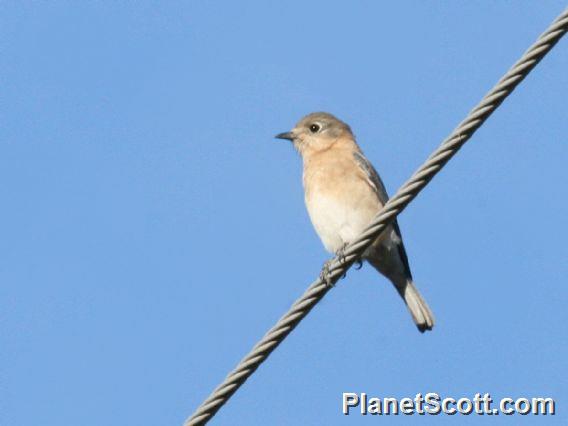Eastern Bluebird (Sialia sialis)

Eastern Bluebird (Sialia sialis)
×


Eastern Bluebird (Sialia sialis)
About Eastern Bluebird (Sialia sialis)
- Kingdom: Animals
- Phylum: Chordates
- Class: Birds
- Order: Perching Birds
- Family: Thrushes and Allies
The eastern bluebird is a small North American migratory thrush found in open woodlands, farmlands, and orchards.
Source: Wikipedia
Visits
-
2001-11-30
Valley Forge National Historic Park, United States of America -
2007-06-16
Cape May National Wildlife Refuge - Cedar Swamp, United States of America -
2007-10-14
Ixhuacan de los Reyes, Mexico -
2008-01-10
Tepic - Cerro de San Juan, Mexico -
2009-02-02
Santiago de Atitlan, Guatemala -
2009-05-08
Burnidge Forest Preserve, United States of America -
2010-02-20
Coatepec, Mexico -
2010-06-25
Elgin - Bluff Spring Fen, United States of America -
2010-10-30
Miller Meadow Forest Preserve, United States of America -
2012-07-08
Necedah NWR, United States of America -
2012-07-09
Sax-Zim Bog, United States of America -
2012-07-10
Bluestem Prairie, United States of America -
-
-
-
-




